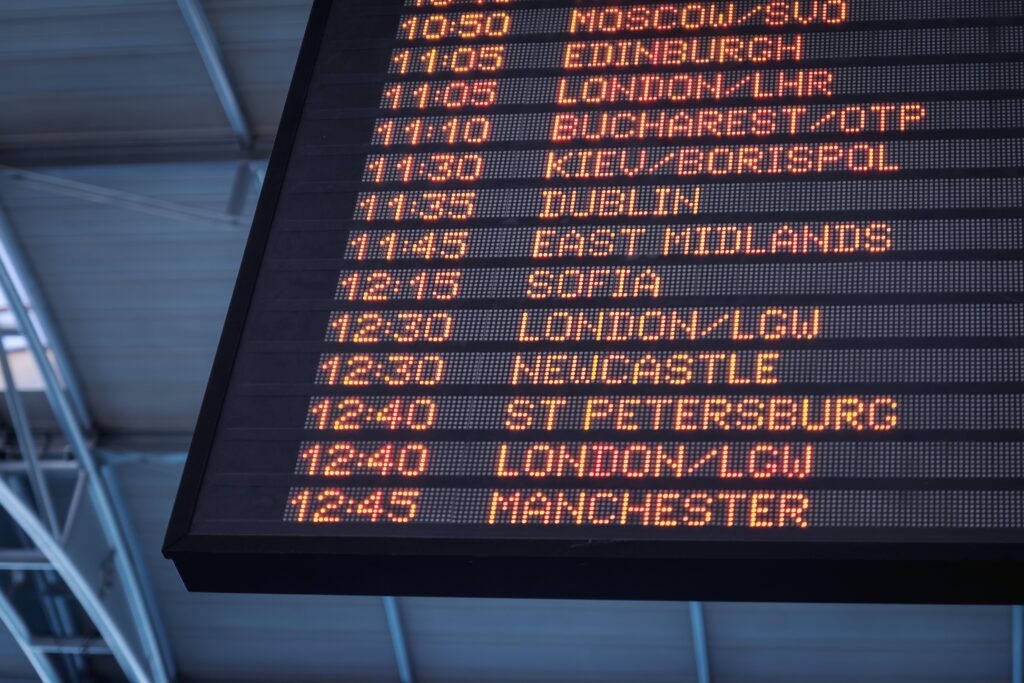Benin Transportation Guide
Benin Transportation Guide: Transportation features diverse options, including taxis, shared minivans, and motorcycle taxis. Roads vary, and travel times can be unpredictable.


Benin Transportation Guide – International Airports
Benin has several international airports that serve as entry points for travelers arriving in the country. These airports facilitate both domestic and international flights, connecting Benin to various destinations within Africa and beyond. Here are the major international airports in Benin:
Cotonou Cadjehoun Airport (COO): Located in the largest city and economic capital of Benin, Cotonou Cadjehoun Airport is the country’s primary international gateway. It offers flights to and from various African destinations and serves as a hub for both domestic and regional travel. Airlines operating at this airport include Air France, Ethiopian Airlines, Turkish Airlines, and others.
Parakou Airport (PKO): Parakou Airport is located in the city of Parakou, in northern Benin. While it primarily handles domestic flights, it also serves as an entry point for travelers arriving from neighboring countries.
Natitingou Airport (NAE): Natitingou Airport is situated in the northern part of Benin, near the town of Natitingou. It mainly serves domestic flights, providing access to this region of the country.
Djougou Airport (DJA): Djougou Airport is located in the city of Djougou in northwestern Benin. It primarily offers domestic flights, connecting the region to other parts of Benin.
Save Airport (SVF): Save Airport is located in the town of Save in central Benin. It mainly handles domestic flights, facilitating travel within the country.
National Airports
Benin has several national airports and airstrips that serve domestic flights within the country. These airports play a crucial role in connecting various regions of Benin. Here are some of the national airports and airstrips in Benin:
Parakou Airport (PKO): Located in the city of Parakou in northern Benin, Parakou Airport serves domestic flights, providing access to the northern region of the country.
Natitingou Airport (NAE): Natitingou Airport is situated in the town of Natitingou in the northwestern part of Benin. It primarily handles domestic flights, connecting the region to other parts of the country.
Djougou Airport (DJA): Djougou Airport is located in Djougou, a city in northwestern Benin. It serves domestic flights, facilitating travel within the country.
Save Airport (SVF): Save Airport is situated in the town of Save in central Benin. It mainly handles domestic flights, allowing for transportation within Benin.
Lokossa Airport (LKT): Lokossa Airport is located in the town of Lokossa in southern Benin. It serves domestic flights within the country.
Tanguiéta Airport (TGE): Tanguiéta Airport is situated in the town of Tanguiéta in northern Benin. It primarily serves domestic flights connecting the northern region of Benin.
Bembèrèkè Airport (BBK): Bembèrèkè Airport is located in the town of Bembèrèkè in central Benin. It handles domestic flights, facilitating travel within the country.
Porga Airport (PKP): Porga Airport is situated in the town of Porga in northern Benin. It serves domestic flights, connecting the northern part of the country.
Benin Transportation Guide – Trains
Benin does not have an extensive passenger train network. The country’s railway infrastructure has historically been limited, and passenger train services have been limited or nonexistent for many years.
However, there have been efforts to rehabilitate and expand the railway network in Benin.
The major railway line in Benin is the Benin-Niger Railway, which primarily serves freight transportation, particularly for the export of goods such as agricultural products.
Plans for the rehabilitation and modernization of the railway system have been discussed to improve transportation and trade within the country and with neighboring countries.


Benin Transportation Guide – Buses
In Benin, buses and minibuses, often referred to as “bush taxis” or “bush buses,” play a significant role in the country’s transportation system. These vehicles are a primary mode of public transportation for both short-distance and long-distance travel within Benin. Here’s what you need to know about buses in Benin:
Bush Taxis: Bush taxis are typically minibuses or shared vans that operate on fixed routes within cities and towns. They are a common mode of urban and suburban transportation and are often used for short-distance travel within urban areas. Passengers can flag them down along the route or at designated bus stops.
Interurban Buses: For longer journeys between cities and towns in Benin, larger buses and coaches are used. These interurban buses connect major cities and towns, making it possible to travel across the country. They provide a more comfortable option for travelers compared to bush taxis.
Bus Stations: In larger cities and towns, there are designated bus stations where interurban buses and bush taxis depart and arrive. These bus stations are bustling hubs of activity, with various vehicles departing to different destinations.
Fares: Bus fares in Benin are generally affordable, and prices can vary depending on the distance traveled. Passengers often pay the fare directly to the driver or conductor upon boarding the vehicle.
Shared Taxis: In addition to buses, shared taxis are also a common mode of transportation in Benin. These taxis are typically small cars that operate on fixed routes within cities. Passengers share the taxi with others heading in the same direction.
Rural Transport: In rural areas and villages where formal bus services may be limited, motorcycles and motorbike taxis, known as “zémidjans,” are often used for short-distance travel.


We recommend
Benin travel tips
Our guide offers essential Benin travel tips and insights for an unforgettable journey. Plan your trip with us!
Benin Transportation Guide – SIM Cards
Providers: Main providers are MTN, Moov, and BBCOM; MTN has the widest coverage.
Registration: SIM card registration is mandatory; provide necessary identification documents at the point of purchase.
Top-Up: Recharge with prepaid credit available at various outlets, including local shops and mobile carrier stores.
Data Plans: Choose from various data packages based on your usage; 3G and 4G networks are available in urban areas.
Coverage: Urban areas have better coverage; rural areas may have limited connectivity.
Internet Settings: Ensure your phone is configured with the correct APN settings for internet access.
Mobile Banking: Some SIM cards offer mobile banking services; inquire about available options.
Dual SIM Phones: Consider using a dual SIM phone for convenience, allowing you to use multiple networks simultaneously.
Language: Most service providers’ staff speak French; basic French phrases can be helpful.
Validity Period: Check the validity period of your SIM card and top-up regularly to maintain active service.
Emergency Services: Save local emergency numbers and contacts for customer service.
Roaming: Confirm roaming options and charges with your home country’s service provider before traveling.
Unlocking Phones: Ensure your phone is unlocked for international SIM card use.
Mobile Apps: Download carrier apps for easier management of services, top-ups, and balance inquiries.
Identification: Carry a photocopy of your identification documents used for SIM card registration as a precaution.
Network Quality: Test the network quality in different locations and choose the provider with the best coverage for your needs.
Currency Converter
Currency Converter EUR/USD: Sat, 19 Apr.
Unit Converter
Benin Transportation Guide – Maps
What map do you need?
Choose your destination
More information about this country







